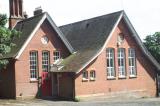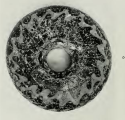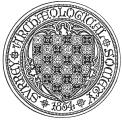News
SyAS receives an HLF grant to expand its training and outreach opportunities!
This September, Surrey Archaeological Society has received a National Lottery grant totalling £90,000 for an exciting two-year heritage project, Sustainable Impact, which is spread across various locations throughout Surrey. Made possible by money raised by National Lottery players, the project focuses on training its members to carry out fieldwork and strengthen the group’s outreach activities in the community.
The Library has now re-opened
Our Library has now re-opened effective 15th August following a period of external maintenance.
PhD studentship funding: The Medieval Iron Industry in the Weald
The University of Exeter, Wealden Iron Research Group and the Early Metals Research Trust are jointly funding a second three year PhD studentship, following the current successful collaboration, focussing on the Romans, which began in 2015. There is the potential to combine documentary, field and laboratory studies. Details are available from Exeter University: www.exeter.ac.uk/studying/funding/award/?id=3042
Simon Esmonde Cleary to chair 'Shining a light on the 5th century AD' conference
We are pleased to announce that Professor Simon Esmonde Cleary has kindly agreed to chair the forthcoming major conference on the Roman-Saxon transition 'Shining a light on the 5th century AD in Surrey and the South-East: how did Roman Britain become Saxon England'.
Simon Esmonde Cleary is Emeritus Professor of Roman Archaeology at the University of Birmingham and his current research is focused on the Roman to post-Roman transition over much of the western part of the empire . He has written extensively on this subject including on the countryside of Roman Britain in the fourth and fifth centuries, and the Roman to Medieval transition, and is therefore ideally placed to lead discussions on what will be the latest archaeological evidence for the 5th century.
Click here to book online
Book ONLINE for the major Roman/Saxon Conference in Ashtead in May 2018
We are holding a major conference at the Peace Memorial Hall in Ashtead about Roman and Saxon 5th Century Surrey on 5th May 2018.
CLICK HERE and then click on the Book tab to book online.
The image (right) is of a large bead found in an Anglo-Saxon cemetery at Guildown, Guildford in the 1920s, described by Lowther in S.A.C Vol. 39 page 11 :
"Plate VIII, No. 3 (Grave No. 123). This, on the other hand, is probably purely an ornament and an extra large type of bead, the hole being rather too small for the insertion of a spindle. It is of the " lobed " type which appears to be derived from the Roman " melon " bead, for which reason this form is usually given an early date. Six of the beads from this site are of the lobed type. This bead is of pale green glass, with an inlaid red spot on each of the six lobes. Found placed centrally on the chest of the skeleton."
Donations in memory of David Williams
Donations in memory of David Williams for the British Red Cross may be sent to Sherlock Funeral Service, Trellis House, Dorking RH4 2ES
Woking Palace publication now out!
Order the Woking Palace Publication from the Surrey Heritage online shop or write to or visit SCAU.
David William's Funeral Arrangements
The funeral of our late member, colleague and Finds Liaison Officer for Surrey, David Williams, is on Thursday 18th January at 10:30 am at St Richards Chapel, Surrey and Sussex Crematorium, Balcombe Road Crawley.
You can now book ONLINE here for the February Symposium
Book online with us for the first time for our February Symposium on 24th February 2018. Book now by clicking here and selecting the Book tab.
Happy Christmas and a peaceful New Year
We wish our members and friends a happy Christmas and a peaceful New Year. Our office and Library will be closed from Thursday 21 December to Tuesday 2 January 2018.






